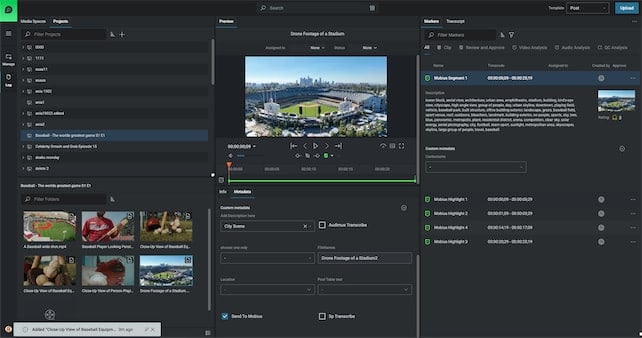Why We Transitioned from Desktop Client Applications to a Centralised Web-Based Platform, Called EditShare One

By Lucy Seaborne FLOW Product Manager
As the product manager for EditShare FLOW, I’m passionate about building tools that make your work easier today and help you stay ready for tomorrow. That’s why we’ve moved from traditional desktop apps to a more flexible web-based platform, and why we created EditShare One. It brings everything together in one place, making FLOW easier to use, more accessible, and ready to grow with you so you can spend less time worrying about tech and more time creating great content.
One of the primary motivations for this shift was improving accessibility and remote collaboration. With client applications, users were required to install and maintain software on their local machines, which created barriers for remote teams and slowed down collaboration. Traditional desktop applications struggled with RAM, CPU limitations, and the sheer number of files in a project. As projects grew, managing large datasets on machines we didn’t control made it hard to ensure consistent performance. A browser-based platform removes these limitations, allowing users to access their workflows from any device, anywhere, without the need for installations. It now means everything is powered from the FLOW Node, an environment that we can control.

Beyond accessibility, reducing IT overhead was another major factor. Client applications require frequent updates, manual deployment across different operating systems, and ongoing maintenance, which places a heavy burden on IT teams and on our development team. We are constantly testing against a new version of OS, an example is Apple’s latest OS revision which caught most by surprise.
A web-based platform eliminates these dependencies, ensuring that users always have access to the latest version without requiring complex installations or system compatibility checks. This not only streamlines internal operations but also reduces downtime and technical support costs for our customers.
Scalability was a big factor for us. Our old system was modular, but it still needed a lot of backend setup and relied heavily on the client’s machine. By moving to a web-based platform, we can now focus on building the core parts of FLOW in a way that’s much easier to scale. At NAB 2025, we’ll be showing off some of those key building blocks starting with our enhanced Organise module.

From a user experience standpoint, consolidating FLOW functionality into a single web-based UI creates a more streamlined workflow. Users will have a designated log in screen that’s tailored exclusively for them. Previously, users had to navigate between multiple FLOW applications for logging, browsing, editorial, media management and QC. Now, with a browser-based platform, we can offer a centralized, intuitive interface with a single pane of glass that integrates all essential tools in one place. This improves workflow efficiency, eliminates the steep learning curve, for different UI’s for different processes and streamlines the entire user experience.
Finally, future-proofing FLOW was a major strategic consideration. Being able to bolt on emerging technologies such as Video and Audio AI was a key win for the ecosystem, making it easier to integrate these types of future innovations.
Ultimately, this transition was driven by the need to create a more flexible, scalable, and user-friendly product that aligns with the evolving needs of the media industry. By shifting away from traditional client applications, we are enabling; better workflows, shorter learning curves, more powerful collaboration, lower operational overhead, and a future-ready technology stack that positions our users for long-term success. If you haven’t tried the new FLOW tools lately you should.





